President Obama unveiled his Climate Action Plan that proposes to cut carbon pollution from coal burning power plants, coupled with supporting energy efficiency and clean, renewable sources of energy, but cannot seem to kick the addiction to some fossil fuels, especially fracked natural gas. He also promises to ramp up climate change adaptation and to lead international efforts to address global warming.
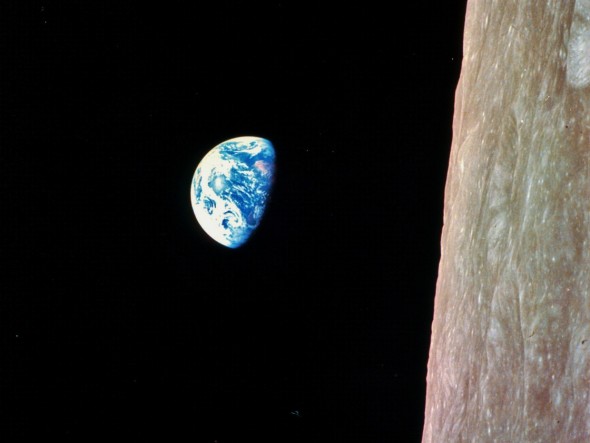

Excerpts of the transcript of President Barack Obama’s speech at Georgetown University announcing his new climate-change policy:
On Christmas Eve, 1968, the astronauts of Apollo 8 did a live broadcast from lunar orbit. So Frank Borman, Jim Lovell, William Anders — the first humans to orbit the moon — described what they saw, and they read Scripture from the Book of Genesis to the rest of us back here. And later that night, they took a photo that would change the way we see and think about our world.
It was an image of Earth — beautiful; breathtaking; a glowing marble of blue oceans, and green forests, and brown mountains brushed with white clouds, rising over the surface of the moon.
And while the sight of our planet from space might seem routine today, imagine what it looked like to those of us seeing our home, our planet, for the first time. Imagine what it looked like to children like me. Even the astronauts were amazed. “It makes you realize,” Lovell would say, “just what you have back there on Earth.”
httpvh://youtu.be/OE-fiyMA_6o
Complete Obama Climate Change Speech – Georgetown University – June 25, 2013
A Warming Planet


And around the same time we began exploring space, scientists were studying changes taking place in the Earth’s atmosphere. Now, scientists had known since the 1800s that greenhouse gases like carbon dioxide trap heat, and that burning fossil fuels release those gases into the air. That wasn’t news. But in the late 1950s, the National Weather Service began measuring the levels of carbon dioxide in our atmosphere, with the worry that rising levels might someday disrupt the fragile balance that makes our planet so hospitable. And what they’ve found, year after year, is that the levels of carbon pollution in our atmosphere have increased dramatically.
That science, accumulated and reviewed over decades, tells us that our planet is changing in ways that will have profound impacts on all of humankind.
The 12 warmest years in recorded history have all come in the last 15 years. Last year, temperatures in some areas of the ocean reached record highs, and ice in the Arctic shrank to its smallest size on record — faster than most models had predicted it would. These are facts.
But I do want to be clear: Allowing the Keystone pipeline to be built requires a finding that doing so would be in our nation’s interest. And our national interest will be served only if this project does not significantly exacerbate the problem of carbon pollution. – Barack Obama
Now, we know that no single weather event is caused solely by climate change. Droughts and fires and floods, they go back to ancient times. But we also know that in a world that’s warmer than it used to be, all weather events are affected by a warming planet. The fact that sea level in New York, in New York Harbor, are now a foot higher than a century ago — that didn’t cause Hurricane Sandy, but it certainly contributed to the destruction that left large parts of our mightiest city dark and underwater.
The potential impacts go beyond rising sea levels. Here at home, 2012 was the warmest year in our history. Midwest farms were parched by the worst drought since the Dust Bowl, and then drenched by the wettest spring on record. Western wildfires scorched an area larger than the state of Maryland. Just last week, a heat wave in Alaska shot temperatures into the 90s.
And we know that the costs of these events can be measured in lost lives and lost livelihoods, lost homes, lost businesses, hundreds of billions of dollars in emergency services and disaster relief. In fact, those who are already feeling the effects of climate change don’t have time to deny it — they’re busy dealing with it. Firefighters are braving longer wildfire seasons, and states and federal governments have to figure out how to budget for that. I had to sit on a meeting with the Department of Interior and Agriculture and some of the rest of my team just to figure out how we’re going to pay for more and more expensive fire seasons.
Obama’s push to reduce coal use has two parts. Decrease domestic coal use by limiting carbon emissions at power plants, as well as to broker initiatives with countries such as India and China to decrease international coal use. – Philip Bump, “The Atlantic”
Farmers see crops wilted one year, washed away the next; and the higher food prices get passed on to you, the American consumer. Mountain communities worry about what smaller snowpacks will mean for tourism — and then, families at the bottom of the mountains wonder what it will mean for their drinking water. Americans across the country are already paying the price of inaction in insurance premiums, state and local taxes, and the costs of rebuilding and disaster relief.
“We Need to Act…”
So the question is not whether we need to act. The overwhelming judgment of science — of chemistry and physics and millions of measurements — has put all that to rest. Ninety-seven percent of scientists, including, by the way, some who originally disputed the data, have now put that to rest. They’ve acknowledged the planet is warming and human activity is contributing to it.
As a President, as a father, and as an American, I’m here to say we need to act.
I refuse to condemn your generation and future generations to a planet that’s beyond fixing. And that’s why, today, I’m announcing a new national climate action plan, and I’m here to enlist your generation’s help in keeping the United States of America a leader — a global leader — in the fight against climate change.
It’s unclear exactly how much in greenhouse gas emissions will have to be offset in order for the [Keystone XL Tar Sands Pipeline] project to get the green light. Questions also remain about whether the [greenhouse gas] emissions that would have to be offset include those resulting from economic activity spurred by the pipeline or just those from the construction of the pipeline itself. — Sam Stein, “Huffington Post”
This plan builds on progress that we’ve already made. Last year, I took office — the year that I took office, my administration pledged to reduce America’s greenhouse gas emissions by about 17 percent from their 2005 levels by the end of this decade. And we rolled up our sleeves and we got to work. We doubled the electricity we generated from wind and the sun. We doubled the mileage our cars will get on a gallon of gas by the middle of the next decade.
So it’s a good start. But the reason we’re all here in the heat today is because we know we’ve got more to do.
This plan begins with cutting carbon pollution by changing the way we use energy — using less dirty energy, using more clean energy, wasting less energy throughout our economy.
Forty-three years ago, Congress passed a law called the Clean Air Act of 1970. It was a good law. The reasoning behind it was simple: New technology can protect our health by protecting the air we breathe from harmful pollution. And that law passed the Senate unanimously. Think about that — it passed the Senate unanimously. It passed the House of Representatives 375 to 1. I don’t know who the one guy was — I haven’t looked that up. You can barely get that many votes to name a post office these days.
It was signed into law by a Republican President. It was later strengthened by another Republican President. This used to be a bipartisan issue.
Six years ago, the Supreme Court ruled that greenhouse gases are pollutants covered by that same Clean Air Act. And they required the Environmental Protection Agency, the EPA, to determine whether they’re a threat to our health and welfare. In 2009, the EPA determined that they are a threat to both our health and our welfare in many different ways — from dirtier air to more common heat waves — and, therefore, subject to regulation.
Federal Pollution Limits on Power Plants
Today, about 40 percent of America’s carbon pollution comes from our power plants. But here’s the thing: Right now, there are no federal limits to the amount of carbon pollution that those plants can pump into our air. None. Zero. We limit the amount of toxic chemicals like mercury and sulfur and arsenic in our air or our water, but power plants can still dump unlimited amounts of carbon pollution into the air for free. That’s not right, that’s not safe, and it needs to stop.
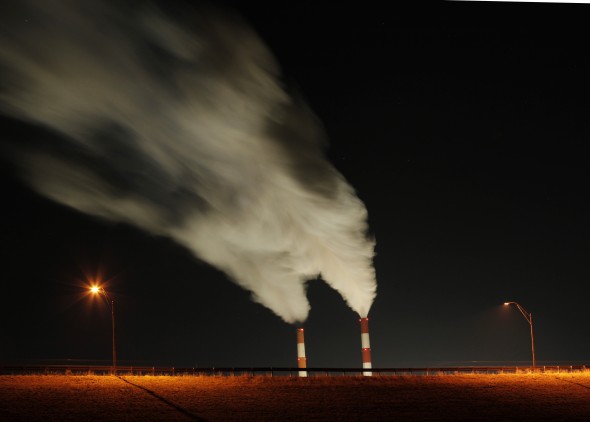

So today, for the sake of our children, and the health and safety of all Americans, I’m directing the Environmental Protection Agency to put an end to the limitless dumping of carbon pollution from our power plants, and complete new pollution standards for both new and existing power plants.
I’m also directing the EPA to develop these standards in an open and transparent way, to provide flexibility to different states with different needs, and build on the leadership that many states, and cities, and companies have already shown. In fact, many power companies have already begun modernizing their plants, and creating new jobs in the process. Others have shifted to burning cleaner natural gas instead of dirtier fuel sources.
Missteps: The President announced loan guarantees for so-called “advanced” fossil fuel projects, and gave shout-outs to natural gas from fracking. On the whole, the plans he laid out weren’t nearly ambitious enough. The truth is, the President alone can’t deliver the type of real climate action we need, like putting a price on carbon. — Mae Boeve, 350.org
Nearly a dozen states have already implemented or are implementing their own market-based programs to reduce carbon pollution. More than 25 have set energy efficiency targets. More than 35 have set renewable energy targets. Over 1,000 mayors have signed agreements to cut carbon pollution. So the idea of setting higher pollution standards for our power plants is not new. It’s just time for Washington to catch up with the rest of the country. And that’s what we intend to do.
Today, we use more clean energy — more renewables and natural gas — which is supporting hundreds of thousands of good jobs. We waste less energy, which saves you money at the pump and in your pocketbooks. And guess what — our economy is 60 percent bigger than it was 20 years ago, while our carbon emissions are roughly back to where they were 20 years ago.
A low-carbon, clean energy economy can be an engine of growth for decades to come. And I want America to build that engine. I want America to build that future — right here in the United States of America. That’s our task.
All of the Above Energy Policy and Keystone XL: Not the Way Out of Climate Crisis
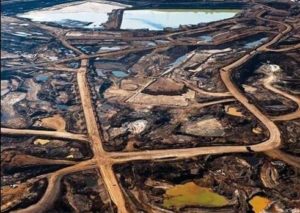

Now, one thing I want to make sure everybody understands — this does not mean that we’re going to suddenly stop producing fossil fuels. Our economy wouldn’t run very well if it did. And transitioning to a clean energy economy takes time. But when the doomsayers trot out the old warnings that these ambitions will somehow hurt our energy supply, just remind them that America produced more oil than we have in 15 years. What is true is that we can’t just drill our way out of the energy and climate challenge that we face. That’s not possible.
I put forward in the past an all-of-the-above energy strategy, but our energy strategy must be about more than just producing more oil. And, by the way, it’s certainly got to be about more than just building one pipeline.
Full exploitation of the tar sands would create a grave threat to the global climate. The Environmental Protection Agency (EPA) estimates that by pipelining 830,000 bpd of tar sands instead of conventional crude, Keystone XL will increase annual U.S. CO2 emissions by up to 27 million metric tons – the impact of adding about 5 million cars on the road. Additionally, tar sands processing produces a by-product called petroleum-coke, which can be used in coal-fired power plants and will release significant amounts of greenhouse gases that must be accounted for in this analysis. — Comment Letter on Keystone XL EIS from Tar Sands Action SoCal
Now, I know there’s been, for example, a lot of controversy surrounding the proposal to build a pipeline, the Keystone pipeline, that would carry oil from Canadian tar sands down to refineries in the Gulf. And the State Department is going through the final stages of evaluating the proposal. That’s how it’s always been done. But I do want to be clear: Allowing the Keystone pipeline to be built requires a finding that doing so would be in our nation’s interest. And our national interest will be served only if this project does not significantly exacerbate the problem of carbon pollution. The net effects of the pipeline’s impact on our climate will be absolutely critical to determining whether this project is allowed to go forward. It’s relevant.
Natural Gas: Safer and Cleaner?
Now, even as we’re producing more domestic oil, we’re also producing more cleaner-burning natural gas than any other country on Earth. And, again, sometimes there are disputes about natural gas, but let me say this: We should strengthen our position as the top natural gas producer because, in the medium term at least, it not only can provide safe, cheap power, but it can also help reduce our carbon emissions.
The debate over contamination from natural gas fracking has intensified as tens of thousands more wells are being drilled in newly discovered shale gas deposits across the country. The EPA and some scientists have long warned that when rock is hydraulically fractured, there is an increased risk of contaminants traveling through underground cracks until they reach drinking water. — Jack Eidt
Federally supported technology has helped our businesses drill more effectively and extract more gas. And now, we’ll keep working with the industry to make drilling safer and cleaner, to make sure that we’re not seeing methane emissions, and to put people to work modernizing our natural gas infrastructure so that we can power more homes and businesses with cleaner energy.
The bottom line is natural gas is creating jobs. It’s lowering many families’ heat and power bills. And it’s the transition fuel that can power our economy with less carbon pollution even as our businesses work to develop and then deploy more of the technology required for the even cleaner energy economy of the future.
Clean Renewable Energy, Wind and Solar
And that brings me to the second way that we’re going to reduce carbon pollution — by using more clean energy. Over the past four years, we’ve doubled the electricity that we generate from zero-carbon wind and solar power. And that means jobs — jobs manufacturing the wind turbines that now generate enough electricity to power nearly 15 million homes; jobs installing the solar panels that now generate more than four times the power at less cost than just a few years ago.
And countries like China and Germany are going all in in the race for clean energy. I believe Americans build things better than anybody else. I want America to win that race, but we can’t win it if we’re not in it.
So the plan I’m announcing today will help us double again our energy from wind and sun. Today, I’m directing the Interior Department to green light enough private, renewable energy capacity on public lands to power more than 6 million homes by 2020.
The Department of Defense — the biggest energy consumer in America — will install 3 gigawatts of renewable power on its bases, generating about the same amount of electricity each year as you’d get from burning 3 million tons of coal.
And because billions of your tax dollars continue to still subsidize some of the most profitable corporations in the history of the world, my budget once again calls for Congress to end the tax breaks for big oil companies, and invest in the clean-energy companies that will fuel our future.
Energy Efficiency
Now, the third way to reduce carbon pollution is to waste less energy — in our cars, our homes, our businesses. The fuel standards we set over the past few years mean that by the middle of the next decade, the cars and trucks we buy will go twice as far on a gallon of gas. That means you’ll have to fill up half as often; we’ll all reduce carbon pollution. And we built on that success by setting the first-ever standards for heavy-duty trucks and buses and vans. And in the coming months, we’ll partner with truck makers to do it again for the next generation of vehicles.
Meanwhile, the energy we use in our homes and our businesses and our factories, our schools, our hospitals — that’s responsible for about one-third of our greenhouse gases. The good news is simple upgrades don’t just cut that pollution; they put people to work — manufacturing and installing smarter lights and windows and sensors and appliances. And the savings show up in our electricity bills every month — forever. That’s why we’ve set new energy standards for appliances like refrigerators and dishwashers. And today, our businesses are building better ones that will also cut carbon pollution and cut consumers’ electricity bills by hundreds of billions of dollars.
That means, by the way, that our federal government also has to lead by example. I’m proud that federal agencies have reduced their greenhouse gas emissions by more than 15 percent since I took office. But we can do even better than that. So today, I’m setting a new goal: Your federal government will consume 20 percent of its electricity from renewable sources within the next seven years. We are going to set that goal.
Buried in there was a call for new efficiency standards for appliances. And to me, this idea—the notion of improving environmental performance by imposing higher standards on consumer products—is the most powerful and doable of the bunch. — Daniel Gross, “The Daily Beast”
We’ll also encourage private capital to get off the sidelines and get into these energy-saving investments. And by the end of the next decade, these combined efficiency standards for appliances and federal buildings will reduce carbon pollution by at least three billion tons. That’s an amount equal to what our entire energy sector emits in nearly half a year.
So I know these standards don’t sound all that sexy, but think of it this way: That’s the equivalent of planting 7.6 billion trees and letting them grow for 10 years — all while doing the dishes. It is a great deal and we need to be doing it.
So using less dirty energy, transitioning to cleaner sources of energy, wasting less energy through our economy is where we need to go. And this plan will get us there faster. But I want to be honest — this will not get us there overnight. The hard truth is carbon pollution has built up in our atmosphere for decades now. And even if we Americans do our part, the planet will slowly keep warming for some time to come. The seas will slowly keep rising and storms will get more severe, based on the science. It’s like tapping the brakes of a car before you come to a complete stop and then can shift into reverse. It’s going to take time for carbon emissions to stabilize.
Climate Change Adaptation
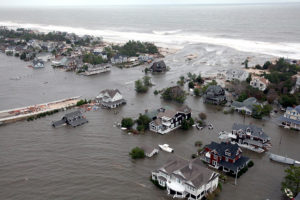
The overwhelmingly Republican legislature in Texas voted to spend money on a new water development bank as a long-running drought cost jobs and forced a town to truck in water from the outside.
New York City is fortifying its 520 miles of coastline as an insurance policy against more frequent and costly storms. And what we’ve learned from Hurricane Sandy and other disasters is that we’ve got to build smarter, more resilient infrastructure that can protect our homes and businesses, and withstand more powerful storms. That means stronger seawalls, natural barriers, hardened power grids, hardened water systems, hardened fuel supplies.
So the budget I sent Congress includes funding to support communities that build these projects, and this plan directs federal agencies to make sure that any new project funded with taxpayer dollars is built to withstand increased flood risks.
And we’ll partner with communities seeking help to prepare for droughts and floods, reduce the risk of wildfires, protect the dunes and wetlands that pull double duty as green space and as natural storm barriers. And we’ll also open our climate data and NASA climate imagery to the public, to make sure that cities and states assess risk under different climate scenarios, so that we don’t waste money building structures that don’t withstand the next storm.
So that’s what my administration will do to support the work already underway across America, not only to cut carbon pollution, but also to protect ourselves from climate change. But as I think everybody here understands, no nation can solve this challenge alone — not even one as powerful as ours. And that’s why the final part of our plan calls on America to lead — lead international efforts to combat a changing climate.
International Leadership
And make no mistake — the world still looks to America to lead. When I spoke to young people in Turkey a few years ago, the first question I got wasn’t about the challenges that part of the world faces. It was about the climate challenge that we all face, and America’s role in addressing it. And it was a fair question, because as the world’s largest economy and second-largest carbon emitter, as a country with unsurpassed ability to drive innovation and scientific breakthroughs, as the country that people around the world continue to look to in times of crisis, we’ve got a vital role to play. We can’t stand on the sidelines. We’ve got a unique responsibility. And the steps that I’ve outlined today prove that we’re willing to meet that responsibility.
Though all America’s carbon pollution fell last year, global carbon pollution rose to a record high. That’s a problem. Developing countries are using more and more energy, and tens of millions of people entering a global middle class naturally want to buy cars and air-conditioners of their own, just like us. Can’t blame them for that. And when you have conversations with poor countries, they’ll say, well, you went through these stages of development — why can’t we?
But what we also have to recognize is these same countries are also more vulnerable to the effects of climate change than we are. They don’t just have as much to lose, they probably have more to lose.
Developing nations with some of the fastest-rising levels of carbon pollution are going to have to take action to meet this challenge alongside us. They’re watching what we do, but we’ve got to make sure that they’re stepping up to the plate as well. We compete for business with them, but we also share a planet. And we have to all shoulder the responsibility for keeping the planet habitable, or we’re going to suffer the consequences — together.
Today, I’m calling for an end of public financing for new coal plants overseas — unless they deploy carbon-capture technologies, or there’s no other viable way for the poorest countries to generate electricity. And I urge other countries to join this effort.
And I’m directing my administration to launch negotiations toward global free trade in environmental goods and services, including clean energy technology, to help more countries skip past the dirty phase of development and join a global low-carbon economy. They don’t have to repeat all the same mistakes that we made.
We’ve also intensified our climate cooperation with major emerging economies like India and Brazil, and China — the world’s largest emitter. So, for example, earlier this month, President Xi of China and I reached an important agreement to jointly phase down our production and consumption of dangerous hydrofluorocarbons, and we intend to take more steps together in the months to come. It will make a difference. It’s a significant step in the reduction of carbon emissions.
And finally, my administration will redouble our efforts to engage our international partners in reaching a new global agreement to reduce carbon pollution through concrete action.
Four years ago, in Copenhagen, every major country agreed, for the first time, to limit carbon pollution by 2020. Two years ago, we decided to forge a new agreement beyond 2020 that would apply to all countries, not just developed countries.
What we need is an agreement that’s ambitious — because that’s what the scale of the challenge demands. We need an inclusive agreement — because every country has to play its part. And we need an agreement that’s flexible — because different nations have different needs. And if we can come together and get this right, we can define a sustainable future for your generation.
So that’s my plan. The actions I’ve announced today should send a strong signal to the world that America intends to take bold action to reduce carbon pollution. We will continue to lead by the power of our example, because that’s what the United States of America has always done.
A Challenge We Must Accept
I understand the politics will be tough. The challenge we must accept will not reward us with a clear moment of victory. There’s no gathering army to defeat. There’s no peace treaty to sign. When President Kennedy said we’d go to the moon within the decade, we knew we’d build a spaceship and we’d meet the goal. Our progress here will be measured differently — in crises averted, in a planet preserved. But can we imagine a more worthy goal? For while we may not live to see the full realization of our ambition, we will have the satisfaction of knowing that the world we leave to our children will be better off for what we did.
“It makes you realize,” that astronaut said all those years ago, “just what you have back there on Earth.” And that image in the photograph, that bright blue ball rising over the moon’s surface, containing everything we hold dear — the laughter of children, a quiet sunset, all the hopes and dreams of posterity — that’s what’s at stake. That’s what we’re fighting for. And if we remember that, I’m absolutely sure we’ll succeed.
Thank you. God bless you. God bless the United States of America.



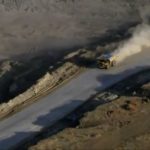









I’ll let Steve Horn from the desmog blog speak for me here.
http://www.popularresistance.org/obama-on-climate-full-speed-ahead-on-fracking/
Thanks for posting, Lauren. Here’s an excerpt:
“When measured in its entire life cycle – as Cornell University researchers found – fracked gas is actually dirtier than coal and therefore is a bridge to nowhere other than extreme climate disruption. That’s due to fugitive methane emissions, conveniently left out of the climate plan: methane is a greenhouse gas far more potent than carbon dioxide.”
Pingback: Sacramento March: Separation of Oil and State - July 11 | WilderUtopia.com
Pingback: Draw the Line on Tar Sands and Climate Change | WilderUtopia.com